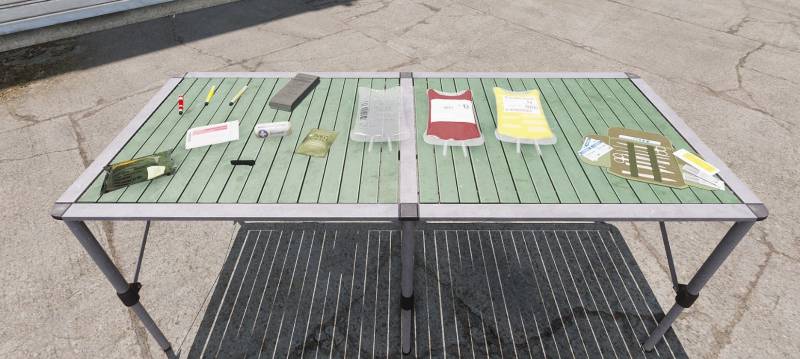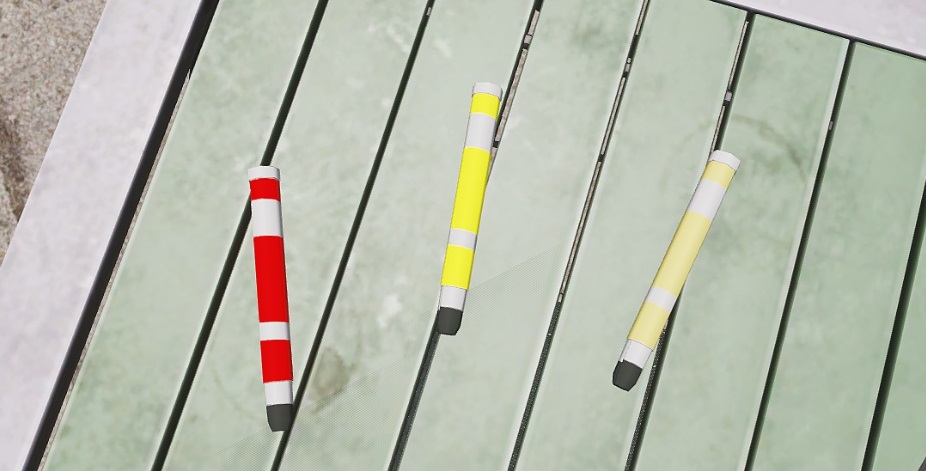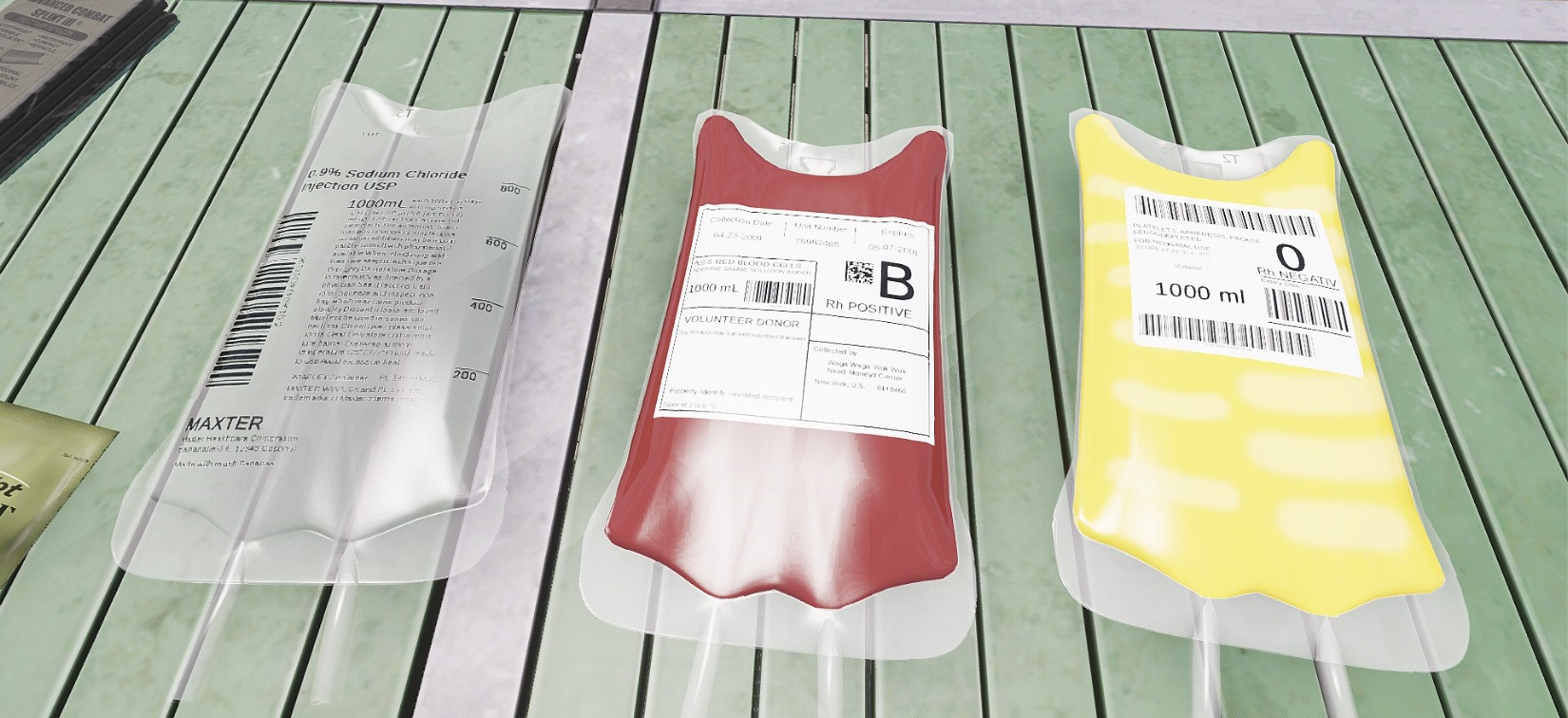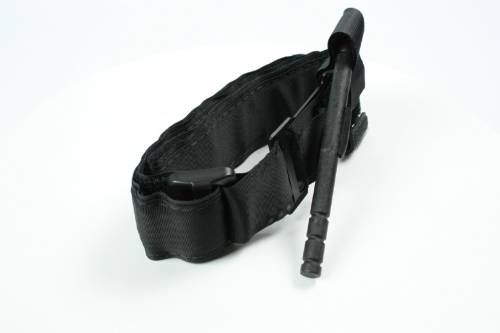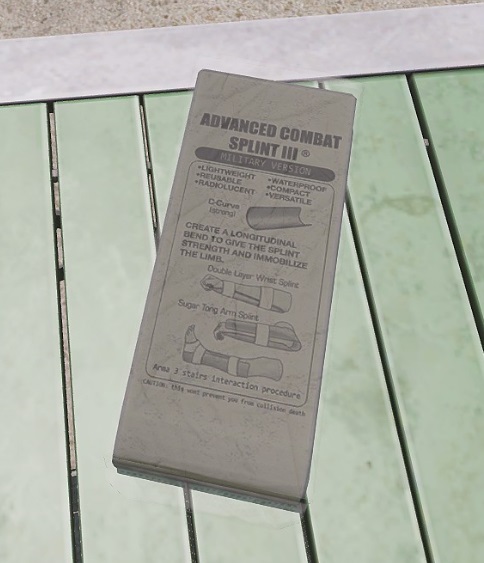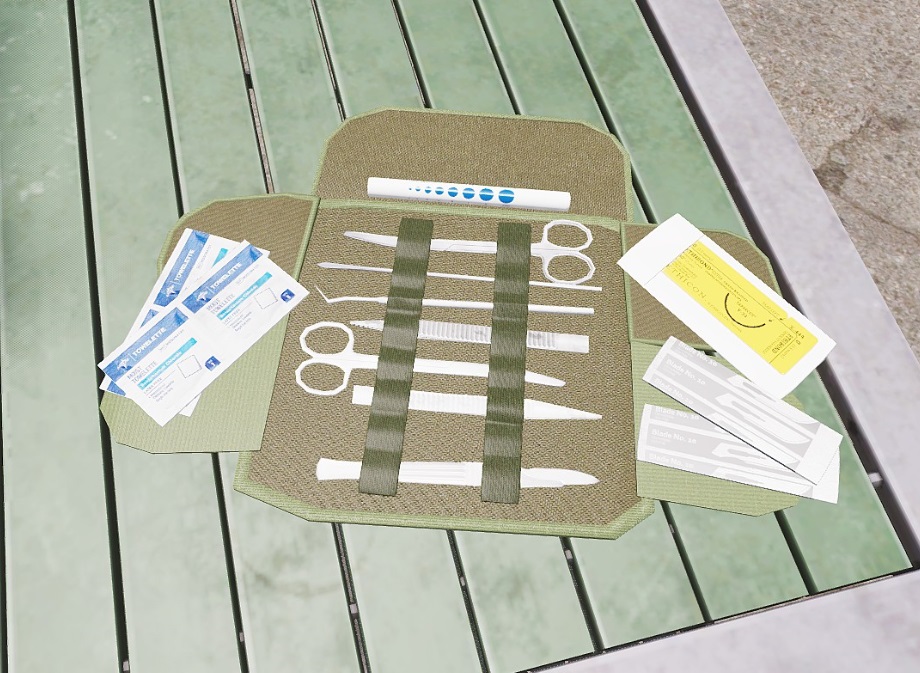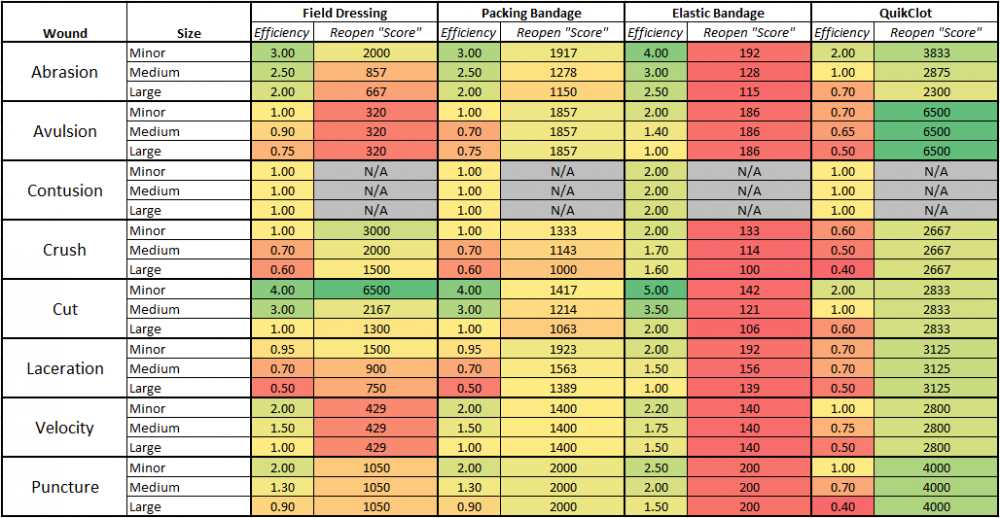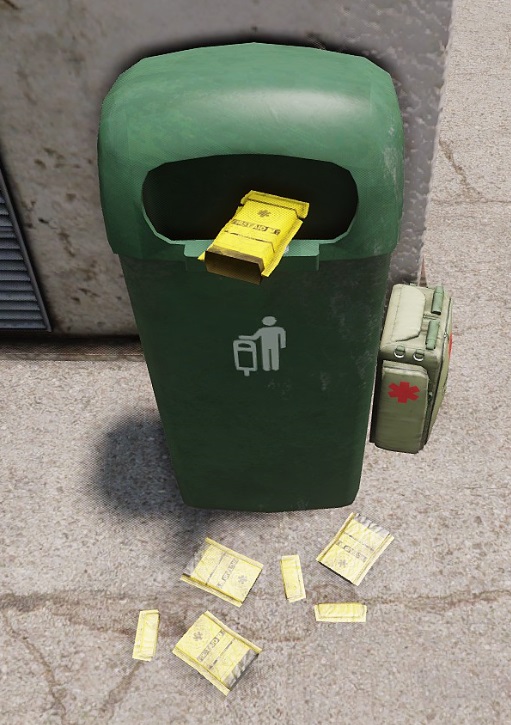ACE Medical Equipment - Introduction
This page contains information about all of the ACE Advanced Medical equipment.
For each item, expect to learn what the item is, what the item does, and how to employ and deploy the item.
Feel free to use the Table of Contents in the upper right to navigate to a section or item that interests you.
Terminology
- Medical Menu: The ACE Medical Menu. Default keybind is H. This is assumed to be the default treatment UI as ACE Interacting with individual limbs on yourself or (especially) on others is generally slow, cumbersome, and prone to making mistakes. (If you are an ACE Interaction loyalist, that's fine, and most everything you read will still apply. You'll just need to explore the interaction tree to find the specific spot to use some of the items.)
- Efficiency: The number of wounds that a given bandage will treat in one application. When speaking generally about a bandage, this considers all wound types/sizes, not specific interactions between a bandage, wound size, and wound type. Higher is better.
- Reopen Score: A number which provides some context on how long a given bandage will last before it reopens. This takes in to account the minimum and maximum reopen time as well as the reopen chance, rather than just one or the other as often seen in guides/tables. When speaking generally about a bandage, this considers all wound types/sizes. Higher is better. (See Appendix A.)
- Heart rate: Generally, how often the human heart beats. Too high or too low is bad. Nominal in-game is 80 beats per minute.
- Blood pressure: Generally, the pressure of the blood on the artery walls in the human circulatory system. Too high or too low is bad. Nominal in-game is 120/80.
- Blood volume: Generally, the amount of blood in the human circulatory system. Nominal in-game is 6 liters.
- Ordinarily: Describes “doctrinal” or “usual” circumstances with regards to medical loadouts and roles.
Bandages
Field dressing, packing bandage, elastic bandage, QuikClot, respectively.
All bandages are applied through the Bandage / Fracture tab of the Medical Menu.
You must select the desired limb to treat, then click the desired bandage to apply it to that limb.
In the ACE Medical mod code, each bandage has efficiency and reopen statistics for each size (small, medium, large) and type (cut, velocity, avulsion, etc) of wound. However, for discussion here, the bandages will be considered as a whole, keeping all wound types/sizes in mind, rather than focusing on specific bandage/wound type/wound size combinations.
Bandaged wounds will still show in the list of wounds for a given body part. Bandaged wounds are preceded by a [B].
Field Dressing
This is the “generic” bandage. It has average efficiency and average reopen score.
Ordinarily field dressings are part of the “personal medical kit,” meaning everyone has them.
As a middle-of-the-road solution, they are serviceable as general-use bandages but are not as efficient as elastic bandages or as long-lasting as packing bandages or QuikClot, so there may be circumstances where the more-specialized bandage types are more suitable.
Packing Bandage
This bandage has average efficiency and high reopen score.
Ordinarily packing bandages are only carried by medics.
Because these bandages last a long time and are equally efficient to the field dressing, they are generally a direct upgrade from the field dressing. However, they can be used to help the medic stabilize a number of patients at once, preventing everyone from bleeding out (or wasting a large amount of bandages on reopened wounds) before the medic can go around and stitch everyone.
Elastic Bandage
This bandage has the highest efficiency and lowest reopen score.
Ordinarily elastic bandages are only carried by medics.
Because these bandages reopen very quickly, these should be used primarily to stop bleeding as fast as possible, or when a medic will immediately stitch the wounds after they are bandaged. Do not use elastic bandages when it is uncertain how long the wounds will go without being stitched, as the bandage will need to be replaced as often as every 60 seconds.
QuikClot (Combat Gauze)
This bandage has the lowest efficiency and highest reopen score.
Ordinarily QuikClots are part of the “personal medical kit,” meaning everyone has them.
Although they are the least efficient bandage, they last the longest time before reopening, on average. For this reason they can be useful to keep a few wounds bandaged without reopening for a very long time, upwards of over 20 minutes depending on wound type/size.
Medication
Morphine, epinephrine, and adenosine autoinjectors, respectively.
All Medications are applied through the Medication tab of the Medical Menu.
In-game, Medication refers to autoinjectors that are used to deliver specific substances in to the patient's body.
Morphine
This medication's primary purpose is to manage pain. It has a side effect of reducing the patient's heart rate, so care must be taken to give morphine only when the patient's heart rate is not at risk of dropping too low.
Ordinarily morphine is part of the “personal medical kit,” meaning everyone has one. Medics ordinarily carry extra.
Epinephrine
This medication's primary purpose is to increase heart rate. It also provides a bonus chance to “wake up” when the patient is unconscious.
Ordinarily epinephrine is only carried by medics.
Epinephrine will not by itself bring someone out of cardiac arrest, though it can still be useful to give a weak heart rate a boost when trying to treat a critical patient.
Adenosine
This medication's primary purpose is to reduce heart rate. It also counteracts other medications in the patient's system, which can help to e.g. counteract a “bad” epinephrine or morphine use.
Ordinarily adenosine is only carried by the medics.
Except in cases of player error or mischief, it will likely never need to be used.
Fluids
1-liter bags of saline, blood, and plasma, respectively.
All Fluids are applied through the Advanced Treatment tab of the Medical Menu. Your unit (i.e. the slot you are playing) must be flagged as an ACE Medic or Doctor in the unit's editor attributes to use any of the IV's.
Currently, all fluids in-game serve the same purpose: to increase the patient's blood volume, counteracting blood loss. It should be noted that it is currently not possible to “overfill” (i.e. beyond the nominal of 6 liters) a patient with fluids. The IV will continue to “drain,” but any excess fluid is essentially destroyed rather than entering the patient's system.
All IV's come in three sizes: 250 milliliters, 500 milliliters, and 1 liter. IV's take the same amount of time to “apply” to a patient regardless of the size of the bag, so it's more efficient to use the 1-liter bags if they're available.
Blood and plasma would likely not see combat medical use in reality since they spoil when not stored under specific conditions. Instead, saline would be the most likely option. However, spoilage is not currently modeled in ACE.
To summarize, the available fluids:
- Blood
- Plasma
- Saline
Other
This category contains items that don't fit in to other categories.
Tourniquet
Image source: Wikipedia.
The tourniquet is applied in the Bandage / Fracture tab of the Medical Menu, same as bandages. You must select the desired limb to tourniquet, then click the tourniquet option to apply it.
Ordinarily a tourniquet is part of the “personal medical kit,” meaning everyone has one. You can use your tourniquet on yourself, or multiple people could contribute their personal tourniquet to help stabilize another individual. Medics ordinarily carry extra.
This item is essentially a band with a ratcheting mechanism that is used to reduce blood flow to a limb. In-game, it completely and indefinitely stops blood loss from all wounds on the target limb. If left on for too long, it will incur an increasing pain penalty, so it should not be left on conscious targets for prolonged periods of time. However, it can be used to near-permanently stabilize an unconscious casualty if necessary.
Keep in mind the tourniquet cannot be used on the head or torso for reasons that should be fairly obvious.
Unless you're Titan, in which case you'll run around saying things like, “Can we put a tourniquet on Hinds' head?”
Splint
The splint is applied in the Bandage / Fracture tab of the Medical Menu, same as bandages. You must select the desired limb (with fracture) to splint, then click the splint option to apply it.
Ordinarily splints are part of the “personal medical kit,” meaning everyone has them.
Splints are used to treat fractures incurred by receiving a significantly “powerful” wound on a limb. Fractured arms incur substantial aim sway and fractured legs limit movement to a limp. Although fractures don't “kill” on their own, the inability to aim or move properly is a major drawback. Treat fractures once bleeding has been dealt with.
Surgical Kit
The surgical kit is used in the Advanced Treatments tab of the Medical Menu. Your unit (i.e. the slot you are playing) must be flagged as an ACE Medic or Doctor in the unit's editor attributes to use the surgical kit. Once the process is started, all “eligible” (bandaged) wounds will be stitched in sequence as the progress bar fills.
Ordinarily the surgical kit is only carried by medics.
The surgical kit is used to stitch bandaged wounds, preventing them from reopening. This saves a significant amount of time and medical resources, so stitching as soon as the patient is stable should always be a priority. Wounds that are stitched will be stitched permanently, but still show in the list of wounds for a given body part. Stitched wounds are preceded by an [S].
The length of time required to stitch wounds depends on the number and type of wounds that have been bandaged. So, in general, more wounds means it will take longer to stitch than less wounds. However, this process can be interrupted partway through (if you need to move, for example) and resumed later. Wounds that were stitched prior to cancelling the action will be stitched, and those that hadn't been stitched yet will not.
Appendix A: Bandage/Wound Type/Wound Size Chart
Appendix B: Two-Axis Bandage Comparison
Appendix C: What about base game medical items?
Medical items from the base game should be converted in to an assortment of ACE Medical items upon pickup. First Aid Kits will give a tourniquet and some bandages and Medikits will give some bandages and medications. Aside from that, they have no use in ACE Medical.
Further Reading
- Blood Pressure - Wikipedia page for blood pressure if you want to learn e.g. the difference between systolic and diastolic blood pressure or whatnot.
- Saline - Wikipedia page on saline's use in medicine.
- Bandage Types - Wikipedia page on bandages, with links to specific types.
- Tourniquet - Wikipedia page on tourniquets.
- QuikClot Combat Gauze - Corporate page for the QuikClot Combat Gauze represented in ACE.
